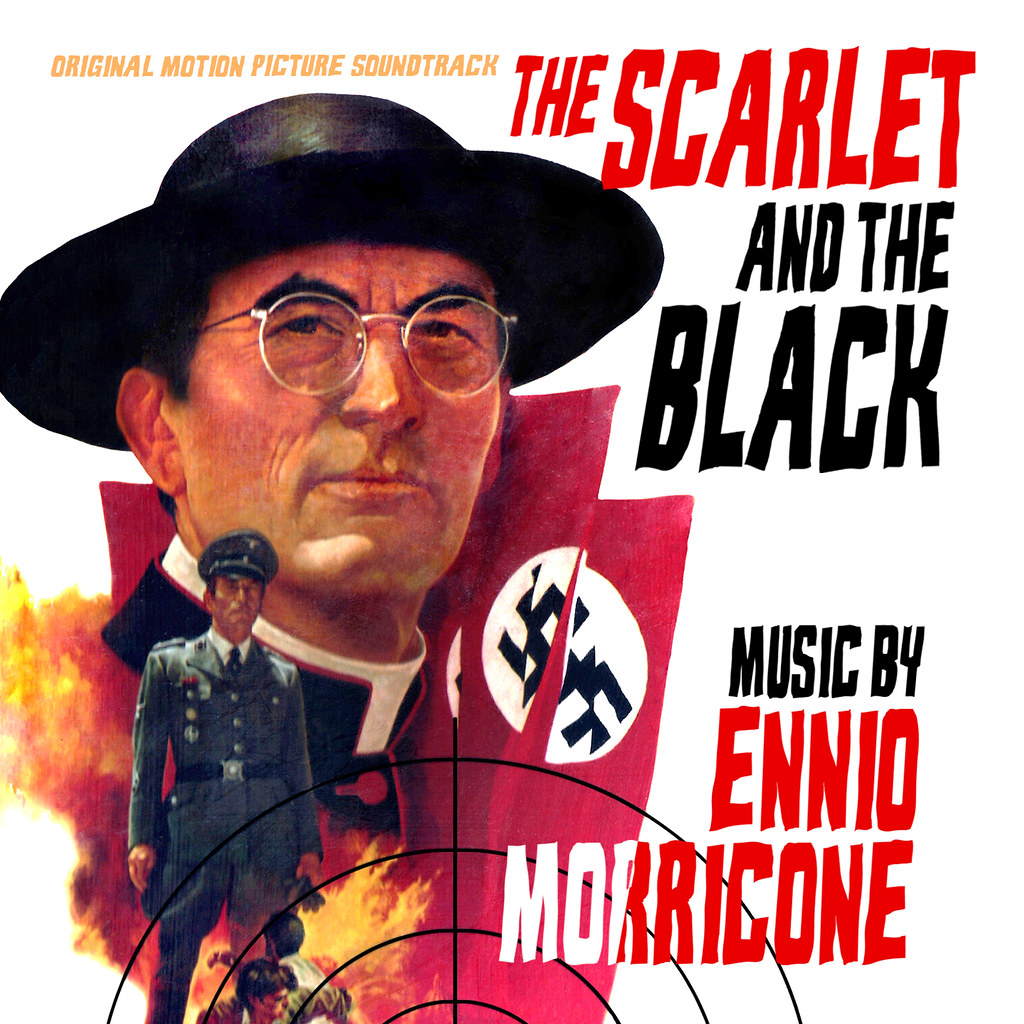 |
| I opted to use this poster from the score as all the decent ones for the film had a rectangular aspect ratio. |
The Scarlet and the Black is a film I grew up watching. I enjoyed it as a kid and it has held up quite well as an adult. The thing that drives the film is the conflict between O'Flaherty and Lieutenant Colonel Herbert Kappler (Plummer), the head of the German police in Rome. O'Flaherty's charity and concern for others is contrasted with Kapler's arrogance and cold cruelty. Similarly Pope Pius XII's (John Gielgud) benevolent though cautious treatment of O'Flaherty is contrasted with the threatening and iron handed way Kapler's superiors deal with him. Consequently, Kapler feels increasingly desperate in his efforts to round up O'Flaherty's escapees, while O'Flaherty himself is weighed down with trying to choose the best course of action in order to both follow his conscience and preserve the church's integrity. This contrast between their approaches to life, and to their differing world views, is brought to a head in the climax, where Kapler meets O'Flaherty in the ruins of the coliseum and asks him to help keep his family safe from the partisans once the allies enter Rome. The once proud conqueror, brought low, seeks help from his sworn enemy, who must now show himself to be the better man and help his adversary.
The film is fairly historically accurate, though it does embellish and change around many events. For one thing many of the other supporting characters name's have been changed (for anonymity I would suppose). It was not Kappler but Ludwig Koch who asked O'Flaherty for help and O'Flaherty did not meet him face to face. There are other similar incidences, where O 'Flaherty and Kappler are substituted for other characters in order to keep the focus on them. The most notable departure is the portrayal of Pius XII's concern over O'Flaherty's operation endangering the Vatican's neutrality. As far as I know this was not the case. It was probably added to the film to give the protagonist a crisis of conscience, which is an understandable though questionable choice, given the negative light it cast on the aforementioned pontiff. There are other scenes which show him in a more positive light however, which helps me to overlook this flaw to a certain extent.
The movie was shot on location in Rome and the director uses the location to his advantage. Shots of O'Flaherty strolling through the Vatican gardens dwarfed by St. Peter's statue or of him and Kappler facing off in the coliseum "where your (Kappler) ancestors watched the lions tear the christians to pieces", really add an expressive visual quality to the film. The performances are quite strong all around, especially from the two leads. Morricone's score is sparse but effective and, as always, memorable. In the end The Scarlet and the Black may not be a perfect film but it still holds up incredibly well. As a historical piece I think it could be compared to The Great Escape in that it gives a good overview of the actual story while at the same time embellishing it to make an effective thriller.
Score: 9/10


No comments:
Post a Comment